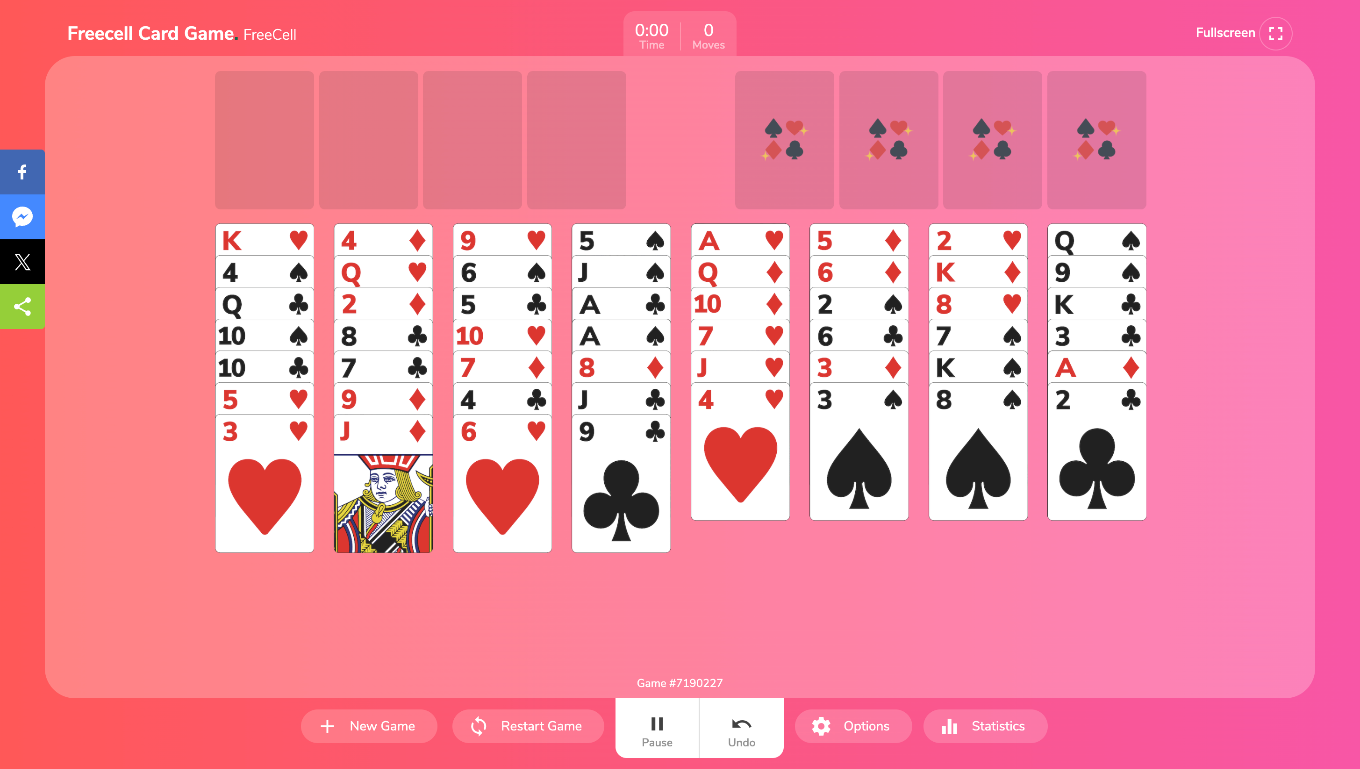FREECELL CARD GAME

Frequently Asked Questions
-
Is this Freecell card game really free to play?
Yes, absolutely. Our Freecell card game is 100% free to play directly in your browser. There are no hidden costs, subscriptions, or fees required. We believe in providing a simple, accessible gaming experience for everyone.
-
What is the objective of the Freecell card game?
The main goal is to clear the board by moving all 52 cards to the four 'foundation' piles in the top-right corner. Each foundation must be built by suit in ascending order, starting from the Ace and ending with the King.
-
How is Freecell different from other solitaire card games like Klondike?
The key difference is that in Freecell, all cards are dealt face-up from the start, and there is no stock pile. This makes it a game of perfect information and pure strategy, unlike Klondike which involves luck from the draw pile.
-
What is a simple strategy to get better at Freecell?
A powerful strategy is to focus on clearing an entire column. An empty column is more valuable than an empty free cell because it can be used to store long sequences of cards, giving you much more flexibility to solve the puzzle.
-
Are all Freecell card games solvable?
Nearly all of them are. It has been proven that over 99.9% of the possible deals in Freecell are winnable. This is why it's considered a true game of skill—if you get stuck, there is almost always a strategic way out.

